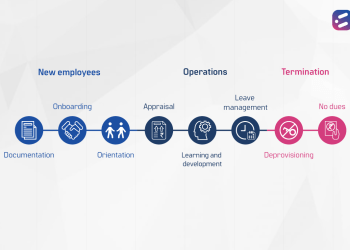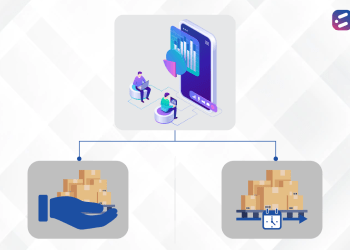Enterprise automation is a comprehensive and integrated approach to implementing automation processes and programs within an organization. It unifies people and processes and allows an organization to quickly identify bottlenecks and inefficiencies and correct them, which is why 62% of organizations are implementing automation and orchestration across IT systems to achieve digital transformation and nurture a culture of innovation.
According to a report, the Business Process Automation market size is expected to grow to USD 19.6 billion by 2026, at a CAGR of 12.2%. As more enterprises across the globe migrate to the cloud – the pandemic has accelerated digital transformation at 59% of surveyed organizations – automation is one of the key drivers to boosting business continuity.
What are the benefits of enterprise automation?
Better productivity
A McKinsey study says that, at a macroeconomic level, automation could raise productivity growth on a global basis by 0.8 to 1.4 percent annually. In the United States alone, roughly 2.6 trillion hours of work a year is automatable; 30% of activities in almost two-thirds of all jobs are automatable; and fully automated enterprises outcompete other companies, thanks to improved productivity.
Increased revenue
A Capgemini survey about enterprise automation found that process rewiring has led to higher revenue in 75% of companies. The report also says that the top-performing 20% of companies are getting “considerably more” business returns than the bottom 20%. Automation has, in effect, led to increased overall profitability in 76% of the enterprises.
Improved customer experience
CX is the battleground of the future, and intelligent automation is the key to winning! The same Capgemini report says this holds true for 86% of the companies surveyed. An MIT Technology Review says AI-powered chatbots have helped improve complaint resolution in 90% of businesses that were part of the survey.
Enhanced agility
The Capgemini report says that 84% of companies surveyed reported greater agility after automation. Efficiency, speed, productivity, consistency, availability, security, repeatability, scalability are also improved as automation serves as a force multiplier. A Forrester report says that employing more digital workers – such as bots to prioritize business and IT processes – accelerates growth.
Reduced errors
An IDC report found that organizations that used intelligent automation improved overall process efficiency (79%) and lowered the mistakes and costs associated with routine and manual tasks as well as time spent in rework (79%). They also increased work done, without increasing headcount (74%).
How does it work?
Businesses can create software robots for all automatable work, especially for mundane, repetitive, and labour-intensive back-office work in areas such as procurement and accounting. Consider creating a “digital” workforce, a robot for every individual, to ensure mundane work is automated accurately and cost-effectively, leaving your workforce free for high-value work.
Take an incremental approach to business process documentation and automation, as this is one of the easiest and most effective ways to embrace digital transformation. Document automation makes collaboration easier, eliminates re-work, and positively impacts customer experience.
In more mature, process-driven environments, consider employing AI in specific roles to achieve enhanced efficiencies. Netflix, for instance, harnessed AI to create personalized viewing recommendations for millions of customers worldwide.
Cultural transformation is a fundamental necessity for enterprise automation. It’s not just about intelligent automation but empathetic automation as well. Understanding and leveraging the positive employee mindset is critical to its success.
Enterprise automation is not an all-or-nothing proposition, and it doesn’t happen instantly either! At CloudNow we suggest that enterprises focus on creating a sustainable automation strategy that includes assessment, planning, and adaptation across the board. Even if you can’t commit to a comprehensive plan for enterprise automation, automate one process or one step in a process. Work with a trusted partner who can guide you on what is workable, and on how to get started.













